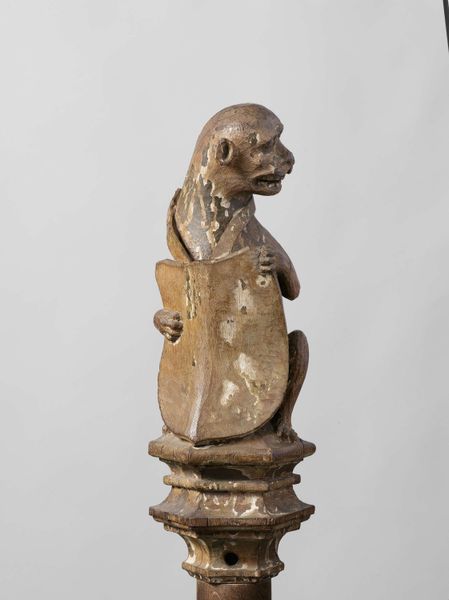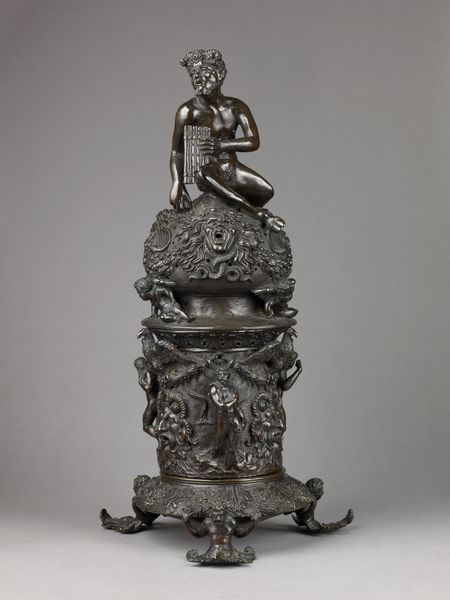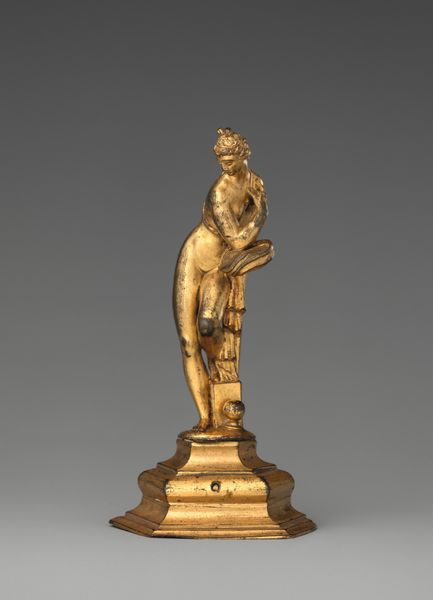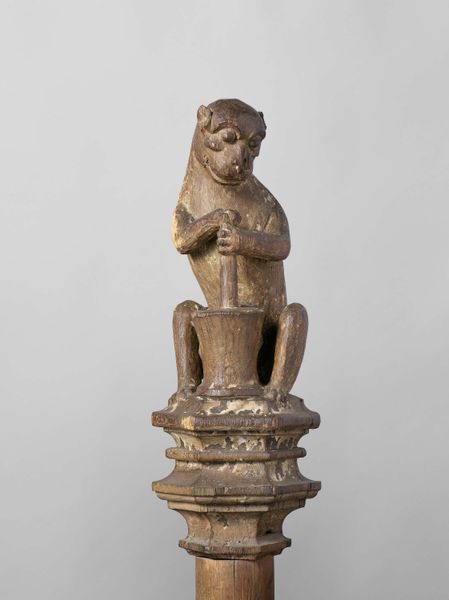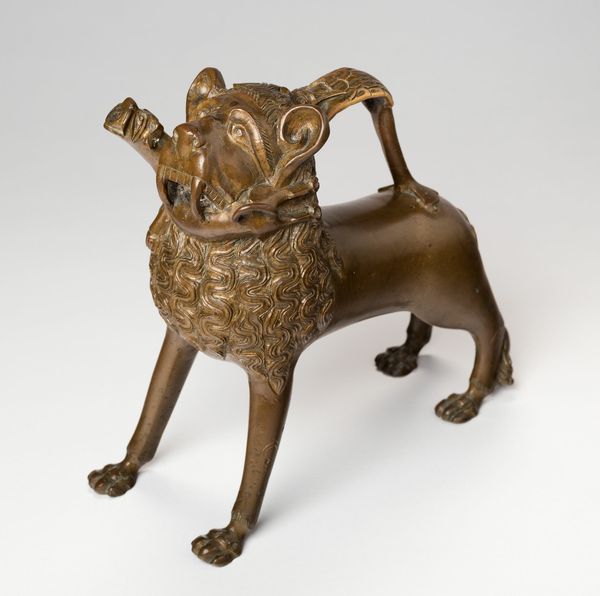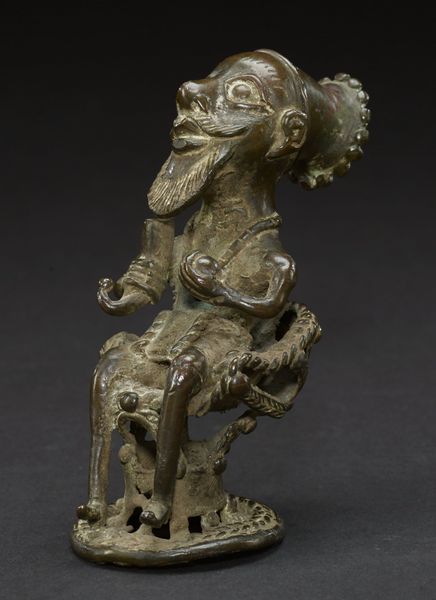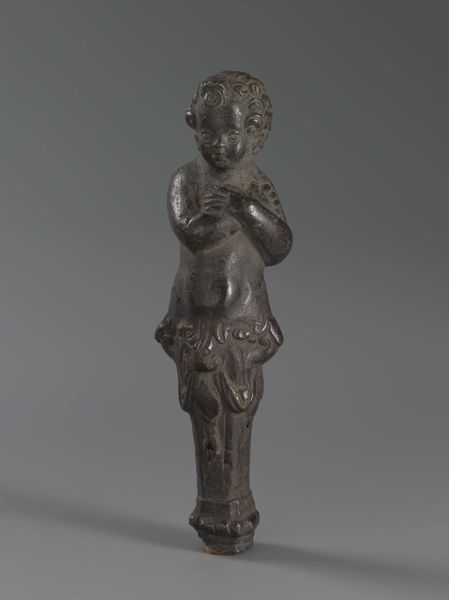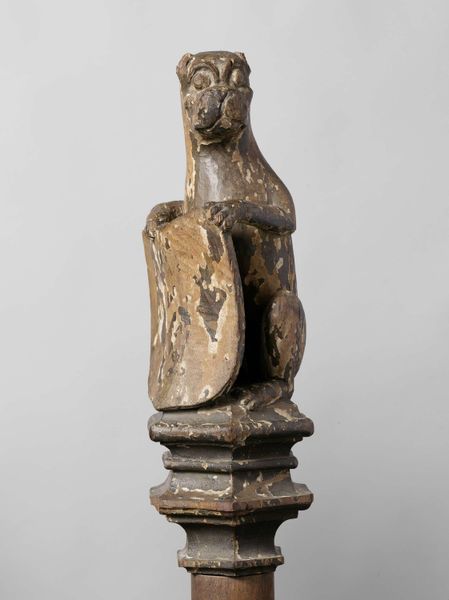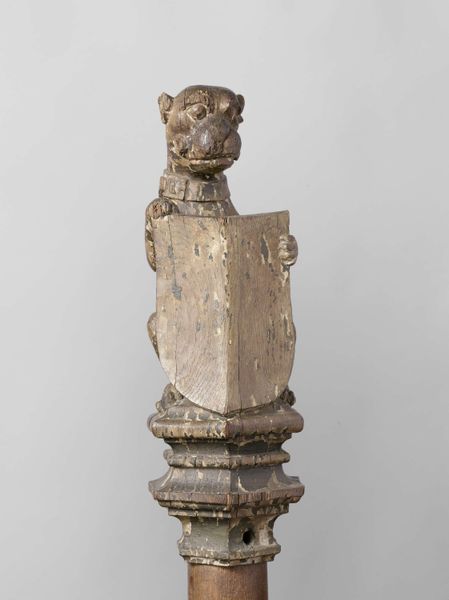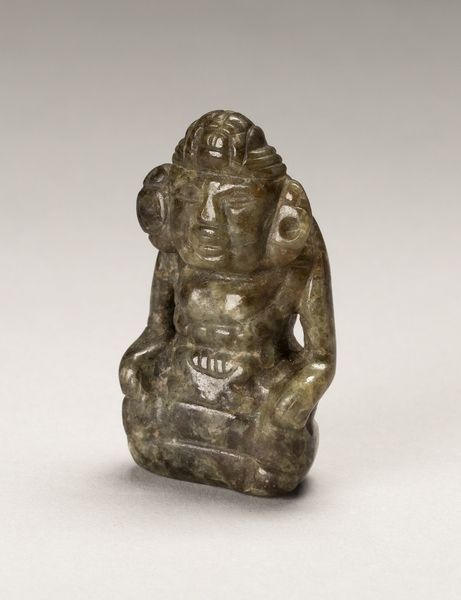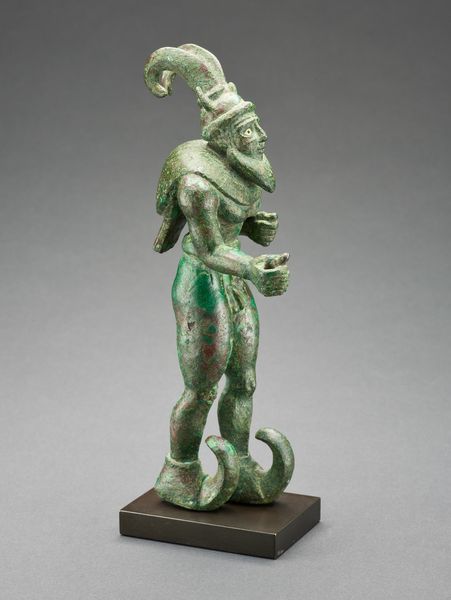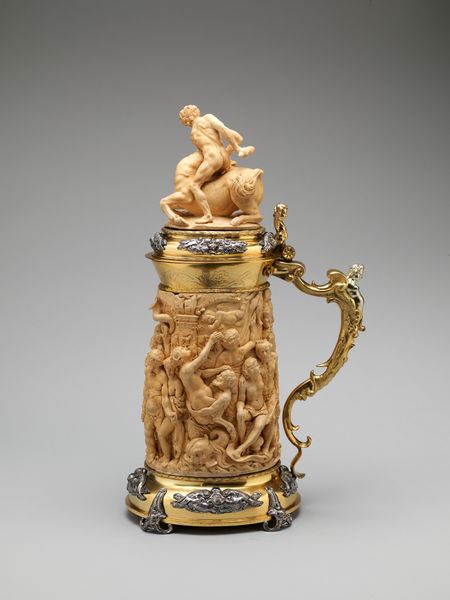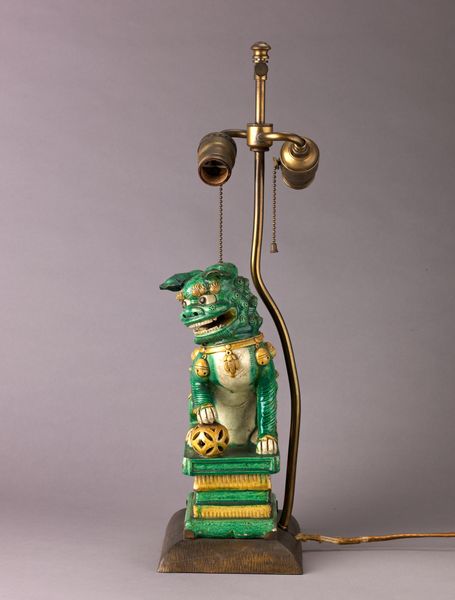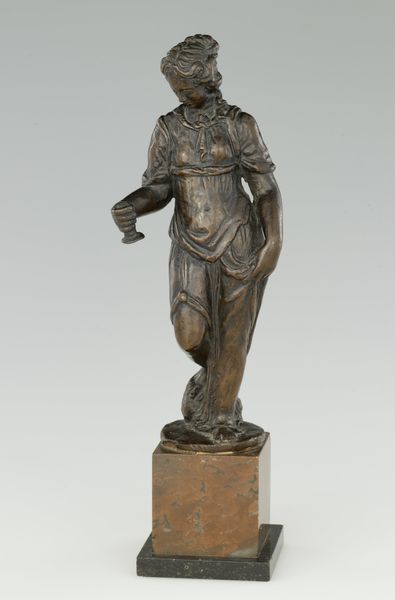
metal, sculpture
#
metal
#
sculpture
#
figuration
#
geometric
#
sculpture
#
decorative-art
Dimensions: Overall: 36 1/4 × 12 3/8 × 13 1/8 in. (92.1 × 31.4 × 33.3 cm); Overall (head): 9 3/8 × 6 1/2 × 7 5/8 in. (23.8 × 16.5 × 19.4 cm); Overall (body): 28 1/2 × 12 3/8 × 13 1/8 in. (72.4 × 31.4 × 33.3 cm)
Copyright: Public Domain
Curator: This decorative metal sculpture from the 19th century is attributed to Elkington and Company. It's called "Leopard Holding a Shield," and it currently resides here at the Metropolitan Museum of Art. Editor: Wow, what strikes me first is the sheer presence! It’s got this odd blend of regal posture and ferocious expression—like a doorman at a heavy metal nightclub. The details feel really ornate; I want to touch it. Curator: I find myself drawn to the piece as an emblem of power and protection, reflecting Victorian-era interests in heraldry and the exotic. The figure of the leopard, a creature associated with strength and agility, brandishing a shield… it suggests a narrative of defense. But also of colonial appropriation, don't you think? Editor: Absolutely. This isn't your cozy domesticated cat. The fierce expression juxtaposed with such fine detail seems like a contradiction. You could also look at it like a metaphor for protection, but like, slightly unhinged. You almost wonder what exactly it's defending! It also reads kind of camp; something feels delightfully excessive about it. Curator: Indeed, consider the function of such an object in the Victorian household. Was it merely decorative, an opulent display of wealth and taste? Or did it serve a more symbolic role, perhaps projecting an image of strength and authority onto the domestic space? I also can't help thinking about the material realities of the metalworkers involved. Where did the metal originate? Who were the hands crafting these details, under what circumstances? Editor: Now that you say that, I almost imagine him as some kind of bizarre mascot for an extremely lavish metalworking company! All that fine chasing; it feels meticulously crafted. I would also wonder what colors it originally might have had. Curator: A point well-taken. I think, considering its context—a world powered by imperial expansion—we are prompted to ask if we should instead interrogate the implications and contradictions embedded within these aesthetic choices, and what meanings they projected onto both the maker and the audience. Editor: Hmm, food for thought. Anyway, he's definitely got an intriguing vibe. If I passed him in the halls of the Met I'd feel impelled to do a double-take.
Comments
No comments
Be the first to comment and join the conversation on the ultimate creative platform.
